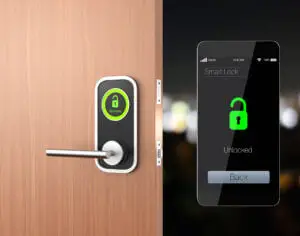If you’re looking for a comprehensive guide to access control systems, look no further. In this FAQ guide, we’ll cover all the basics and answer some of the most common questions about access control systems.
What is an access control system?
An access control system is a security mechanism that regulates who has access to a particular resource or area. This can include physical spaces like buildings or rooms, as well as digital resources like computer networks and databases.
The goal of an access control system is to prevent unauthorized access and ensure that only authorized users can access the resources they need.
What are the different types of access control systems?
There are several different types of access control systems. These include:
1. Physical access control systems
Physical access control systems regulate access to physical spaces like buildings, rooms, and entry points. Common examples of physical access control systems include door locks, turnstiles, and security gates. Moreover, electronic access control is also included in it.
2. Logical access control systems
Logical access control systems regulate access to digital resources like computer networks and databases. These systems use usernames, passwords, and other authentication mechanisms to ensure that only authorized users can access the resources they need.
3. Biometric access control systems
Biometric access control systems use physical traits like fingerprints, facial recognition, and iris scans to identify and authenticate users. These systems are often used in high-security environments where traditional authentication methods are not reliable enough.

What are the benefits of using an access control system?
There are several benefits to using an access control system. These include:
1. Enhanced security
An access control system can help to enhance security by preventing unauthorized access to resources. This can help to protect sensitive information and valuable assets. No unauthorized person can gain access.
2. Improved compliance
Many industries have compliance requirements that must be met to avoid fines and other penalties. A role-based access control (RBAC) system can help to ensure that these requirements are met.
3. Increased convenience
An access control system can make it easier and more convenient for authorized users to access the resources they need. This can improve productivity and reduce downtime, such as in the case of mandatory access control.
4. Better data tracking
A discretionary access control (DAC) system often includes detailed logging and tracking capabilities, which can be used to track user activity and detect suspicious behavior. It can restrict access to unauthorized persons.
How does an access control system work?
An access control system works by using various authentication mechanisms to verify user identity and determine whether access should be granted or denied. This typically involves the following steps:
- User identification: The user presents some form of identification, such as a username or fingerprint.
- Authentication: The system verifies the user’s identity using an authentication mechanism like a password or biometric scan.
- Authorization: The system checks whether the user is authorized to access the resource in question.
- Access: If the user is authorized, rule-based access control will grant access. If not, access will be denied.

How can I choose the right access control system?
Choosing the right access control system depends on several factors, including:
1. Your needs
What resources do you need to protect? What are the risks associated with unauthorized access to those resources? These are important questions to consider when choosing an access control system.
2. Your budget
An access management system can range from simple door locks to complex biometric systems. Consider your budget when choosing an access control system.
3. Scalability
Consider the future growth of your organization when choosing an access control system. You’ll want a system that can grow and adapt to your changing needs.
4. Integration
If you already have existing security systems in place, you’ll want to choose an access control system that can integrate with those systems.
How much does an access control system cost?
The cost of an access control system can vary widely depending on the complexity of the system and the number of users and resources involved. Simple door locks can cost a few hundred dollars, while complex biometric systems can cost tens of thousands of dollars or more.
How long does it take to install an access control system?
The installation time for an access control system can vary depending on the complexity of the system and the size of the installation. Simple door locks may be installed in a few hours, while larger installations may take several days or weeks.

Can I install an access control system myself?
While it is possible to install some access control systems yourself, most installations are best left to professionals. Professional installers can ensure that the system is installed correctly and that all necessary components are working properly.
How do I maintain an access control system?
To maintain an access control system, you should:
- Regularly test the access control panel to ensure that it is working properly.
- Keep the system up to date with the latest security patches and firmware updates.
- Train access control readers (users) on proper access control procedures.
- Monitor the system for suspicious activity and investigate any potential security breaches.
What should I do in the event of a security breach?
If a security breach occurs, you should take the following steps:
- Isolate the affected resources to prevent further damage or unauthorized access.
- Contact your security team or support provider for assistance.
- Identify the cause of the breach and take steps to fix the vulnerability.
- Notify affected parties and stakeholders about the breach and any potential impact.
- Review and update your access control policies and procedures to prevent future breaches.
Are there any limitations to using an access control system?
While access control systems can be highly effective, there are some limitations to consider. These include:
1. User error
Access control systems rely on users to follow proper procedures and protocols. If a user makes a mistake or forgets their password, they may be locked out of the system, leading to downtime and lost productivity.
2. Technical failures
Like any access control technology, access control systems are subject to technical failures or malfunctions. These can lead to downtime or unauthorized access if not detected and corrected promptly.
3. False positives/false negatives
Access control systems sometimes produce false positives (in which authorized users are denied access) or false negatives (in which unauthorized users are granted access). These can lead to frustration and lost productivity.

How can I troubleshoot common issues with my access control system?
If you’re experiencing issues with your access control system, the following troubleshooting steps may help:
- Check for network connectivity issues.
- Check for power or battery issues.
- Verify that all hardware components are properly connected and functioning.
- Check for access control software or firmware updates that may be needed.
- Test the system with known good credentials to ensure that the authentication mechanisms are working properly.
- Contact your support provider for additional assistance.
How can I stay up to date on the latest access control technologies?
To stay up to date on the latest access control technologies, you can:
- Attend industry conferences and educational events.
- Follow industry thought leaders and publications.
- Join online forums and discussion groups.
- Work with a trusted security provider who can advise you on the latest technologies and best practices.
Conclusion
An access control system is an effective way to protect physical and digital resources from unauthorized access. By understanding the basics of access control systems security and choosing the right system for your needs, you can enhance security, improve compliance, and increase productivity.
With the right maintenance and troubleshooting procedures in place, you can ensure that your access control system continues to function effectively and efficiently for years to come.





